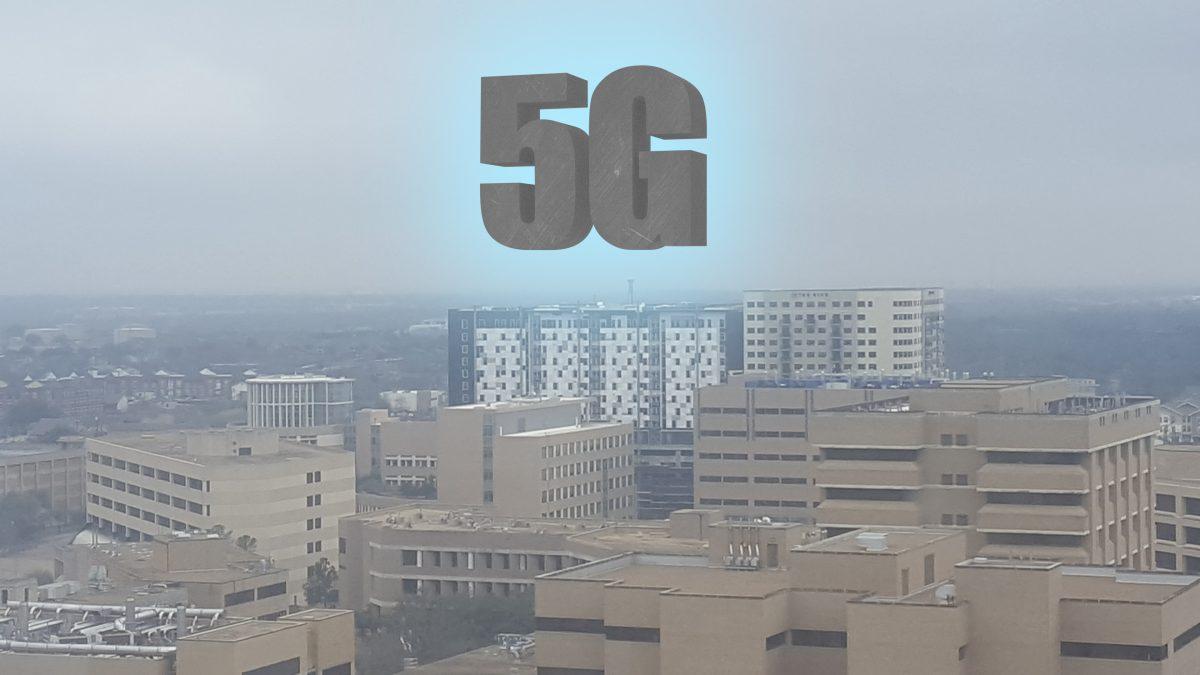The Texas A&M Academy for Advanced Telecommunications and Learning Technologies (The Academy) is attempting to establish a 5G wireless research testing site in Bryan-College Station.
According to the International Telecommunications Union, 5G generation wireless systems are the proposed next telecommunications standards that operate in the 28, 38 and 60 GHz radio frequencies, after the current 4G standards.
The project is part of a National Science Foundation grant competition called Platforms for Advanced Wireless Research (PAWR). The program uses $400 million that was set aside by the Obama administration, with each selected university receiving $20 million.
The Academy created the proposal with the assistance of other Texas A&M partners including the Texas Transportation Institute, the Department of Electrical and Computer Engineering and Texas Department of Transportation.
Academy Associate Director Walt Magnussen presented the proposal to the city council at a meeting in May 2017. He said it would be beneficial to the area if the project is approved.
“Even though companies such as AT&T and Verizon are conducting their own 5G research, a lot of that research is proprietary,” Magnussen said. “This program gives academic researchers greater opportunity to test out new ideas.”
Though A&M was one of the 10 finalists after the competitive process, it was not selected as one of the testing facilities in this round of proposals. Regardless, Magnussen said they received valuable feedback which they will use to improve their plan during the next request for proposals cycle, which will begin March of this year.
The selected proposals were announced in January, with those who have been selected announced in January 2019.
The team at The Academy is optimistic about their prospects during this iteration of the grant process.
“They told us what were some of the weaknesses in our proposal and we now know what to improve on in the next proposal,” Magnussen said.
Soumya Jyoti, an electrical and computer engineering graduate student whose research interests include 5G millimeter wave channel modelling, explained one of the challenges of 5G is that mobile data traffic is projected to rise exponentially in the foreseeable future. Therefore, 5G technology needs to be developed to accommodate a huge rise in data usage.
Meanwhile, A&M is continuing to promote innovation and collaboration in 5G wireless technologies. Over the past summer, Magnussen and Alex Sprintson, electrical and computer engineering professor, organized a workshop for researchers and students as part of another National Science Foundation initiative, the Global Environment for Networking Innovations (GENI). According to the NSF, GENI is a unique virtual laboratory for at-scale networking experimentation envisioning future internets.
“Part of the reason they came to A&M is that it’s [in] the Southwest United States,” Sprintson said. “They are trying to go around the country to teach basic networking. This workshop was just to get people aware that [GENI] exists. The idea is that people start using this testbed for their research.”
More than 55 researchers and students participated in lectures and tutorials on the GENI research and experiments.
The National Science Foundation will be open the next PAWR grant application cycle in March 2018 with the application deadline in June 2018.
Texas A&M working to bring 5G network to B-CS
February 7, 2018
Donate to The Battalion
Your donation will support the student journalists of Texas A&M University - College Station. Your contribution will allow us to purchase equipment and cover our annual website hosting costs.























